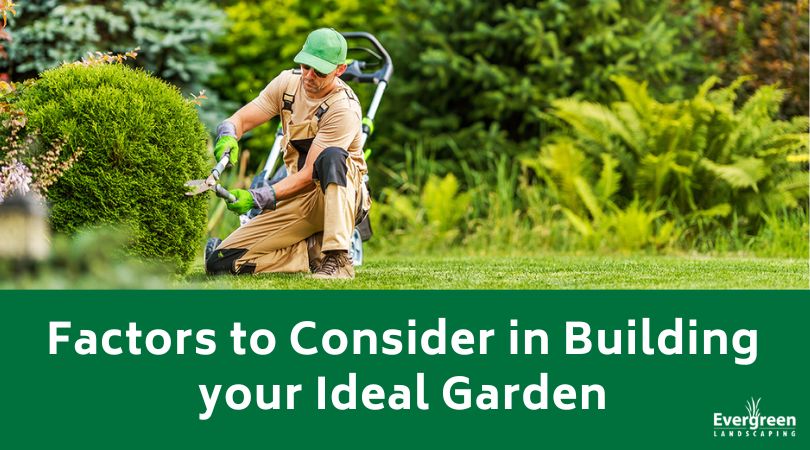Gardening: Improve Your Garden With This Useful Information
Gardening not only benefits you physically and emotionally, it can also feed your family and drive a business. You can determine all the things that you need so that you don’t waste any money on equipment that isn’t needed, or the wrong seeds for your type of environment.
Make sure you protect your knees well while you are gardening. Bending over for a long while is quite difficult for a lot of people. Kneeling is a preferred way to get to your plants while minimizing back pain. You can purchase an inexpensive kneeling pad for gardening in order to protect your knees.
Consider what particular vegetables are most often on your dining room table and include them when you plan your garden. By planting your own vegetables, you will save a lot of money at the grocery store and also experience fresher, better-tasting food. It is pointless to grow an item your family or you won’t eat, particularly if your space is limited.
If you have salt spots on your clay pots, try using a mixture of rubbing alcohol and vinegar. It is common for build-ups of salt to accumulate over long periods of time on pots made of clay. Clean the pot with a mixture of white vinegar, rubbing alcohol and water measured equally into a spray bottle. Scrub it down with any brush you happen to have handy, and the salt will come right off. Use some clear water to rinse the pot before planting anything else in it.
Water your garden wisely. Put down the watering can or garden hose, and spread out a time-saving soaker hose instead. Keeping the water pressure low on your soaking hose will help avoid harm to tender plants. You can go about your business and leave your soaker hose at work for an hour or two.
Gardening Woes? Helpful Information To Improve It!
There are an immense number of resources available that you can use to obtain high quality gardening. Here are the best tips in one place in order to take up gardening.
• The handles of your gardening tools can be used as a convenient measuring instrument. Just lay your tool down on the floor next to the handles. Use a permanent marker to label the distances.
• You don’t need a costly chemical solution to deal with powdery mildew on plants. Mix a little liquid soap and baking soda into water. Spray this mix on plants every week and the mildew is gone. This method is not going to cause any damages to your plants and it will eliminate the mildew in a short amount of time.
• When fall has arrived, it’s time to start planting all of your fall edibles. A hollowed out pumpkin can become a planting container instead of clay pots. Once you cut an opening at the top of the pumpkin and scoop out the insides, spray the edges and inside with Wilt-Pruf to prevent rotting.
• Don’t cut your grass too short. If you leave a bit more height, the roots will go down deeper into the dirt, which makes the grass less prone to drying and other hazards. Short grass is more prone to getting dried out and dead grass.
• Try “boiling” weeds in your garden with boiling water to get rid of them. Boiling water in a safe herbicide which won’t damage your garden or your body. Boiling water can hurt the weed roots and will inhibit future growth.
• Moisture on plants is a sure way to attract disease. Fungi are a very common problem in the world of gardening. It is possible to get rid of fungi after it appears with anti-fungal sprays, but the key is to treat your garden before any problems arise.
• Do you enjoy fresh mint leaves but hate how they grow so fast and take over your entire garden? You can stunt the growth by planting them inside a pot or super-sized bowl. You can plant the container into the soil if you want to, but the walls of the container will hold the roots captive, and make sure that the plant doesn’t run rampant in your garden.
• You should divide your irises. You can increase your stock of irises by dividing the overgrown clumps. The bulbs, and once you put them back into the earth; they will typically flower the following year. Use a knife to divide rhizomes. Cut new pieces from the outside then throw away the remaining center. Each new piece should possess at least one healthy offshoot. Replant your pieces as soon as you have finished the cuttings.
• If you are just getting into gardening, make sure you read and follow all the directions on any tool or chemical you use. If you miss this easy step, you expose yourself to safety hazards or a risk of experiencing adverse reactions. Keep yourself safe and always follow directions.
Gardening is an entertaining and rewarding activity. The greater your knowledge, the greater will be your gardening abilities. Research, hard work, and some dedication are the main requirements. Use all the information available to you. Try using these tips so you can get a better gardening experience! Once you see the literal fruits of your labors, the time and effort you’ve invested will seem worthwhile.
Need a jump start with your gardening? Contact Evergreen Landscaping for a free consultation, 805-773-5395.


